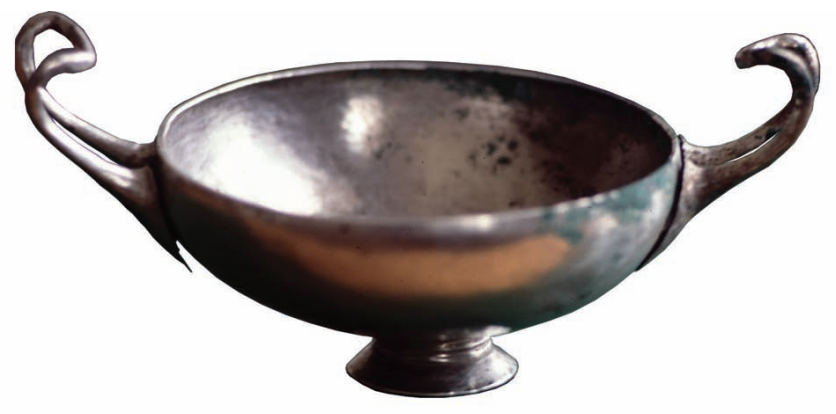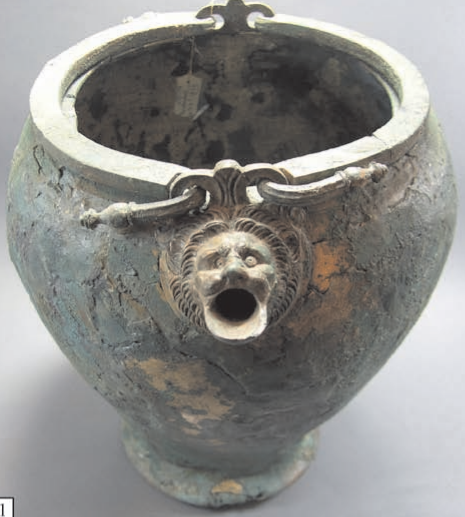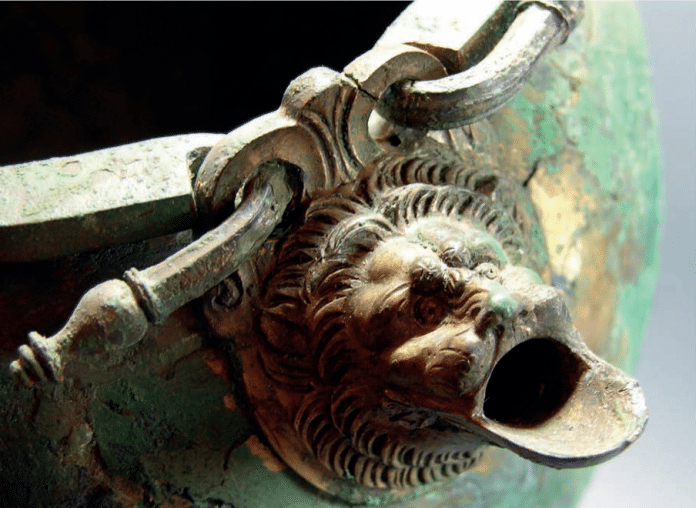Situla (plural situlae), from the Latin word for ‘bucket’ or ‘pail’, is the term in archaeology and art history for a variety of elaborate bucket-shaped vessels from the Bronze Age to the Middle Ages, usually with a handle at the top. All types may be highly decorated, most characteristically with reliefs in bands or friezes running round the vessel. (Wikipedia) Situla discovered in Great Ryzhanovka Kurgan had a rounded biconical body and a pouring spout with a strainer in the form of a lion head. The situla’s body was hammered from a thin bronze sheet of a golden color, while the pouring spout and strainer, as well as the handles, were cast. It was 20.6 cm in height, 13.1 in diameter on top, and 11.5 in diameter at the bottom. Inside the situla, there were two more vessels – a krater and a kylix. Since in ancient times a krater was used for mixing wine with water, a situla – for pouring wine, and a kylix was used for drinking, the three vessels constituted a wine-drinking set.












